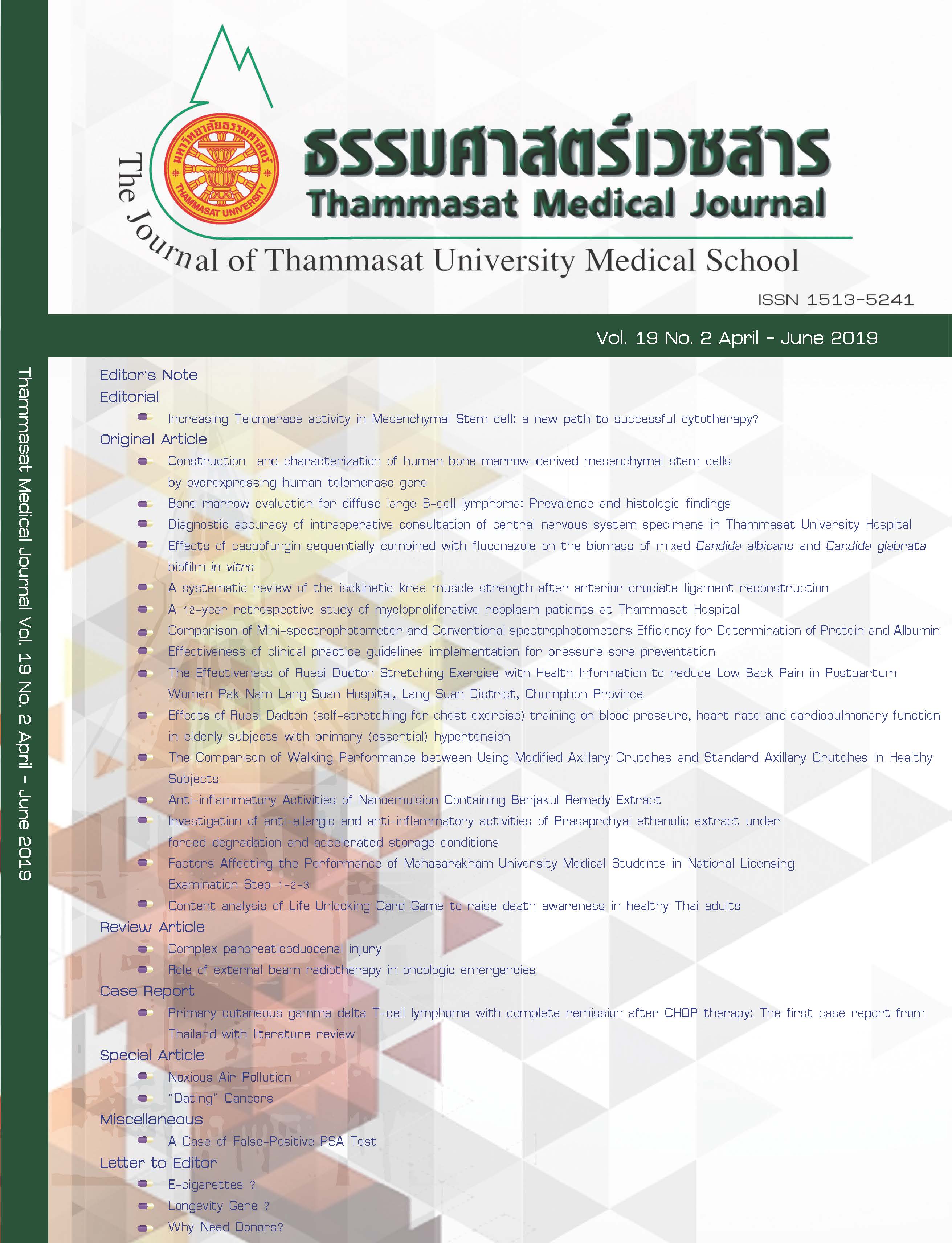Effects of caspofungin sequentially combined with fluconazole on the biomass of mixed Candida albicans and Candida glabrata biofilm in vitro
Keywords:
Biofilm, Candida albicans, Candida glabrata, Caspofungin, FluconazoleAbstract
Introduction: Previous study revealed that pre-exposure of C. albicans biofilm with fluconazole (FLU) lead to a significant decrease of the efficacy of caspofungin (CAS). This study aimed to investigate the effect of CAS sequentially combined with FLU on the reduction of mixed Candida albicans and Candida glabrata biofilm.
Method: Mixed C. albicans and C. glabrata biofilms were pretreated either with CAS or FLU at 1 MIC concentration for 1 to 6 hours, then FLU or CAS at 1 MIC concentration were added to selected biofilms, respectively. Biofilm quantitation was evaluated using crystal violet (CV) assay. Additionally, antifungal activity of sequential combination drugs at subinhibitory concentrations were analyzed at 3 and 4 hours pre-exposure time.
Result: The antifungal effects of CAS/FLU combination at 1 MIC concentration against CAS-pretreated mixed biofilms at every pre-exposure time were not different, however, the inhibitory effects of combinations were significantly declined when mixed biofilms were pretreated with FLU for a longer period of time (P<0.001). At 3 hours FLU-pretreatment, the percentage of biofilm reduction in response to CAS/FLU combinations was significantly increased when CAS at 0.5 MIC and FLU at 0.5 MIC were combined (39.17%), compared to that of CAS at 1 MIC combined with FLU at 1 MIC (12.52%) (P<0.05).
Conclusion: The efficacy of CAS/FLU combinations treatment on the biomass of mixed C. albicans and C. glabrata biofilm was dependent on the pre-exposure time and sequence of combination drugs. Cell viability and microstructure of mixed biofilm in response to CAS/FLU sequential combination should be further evaluated.



